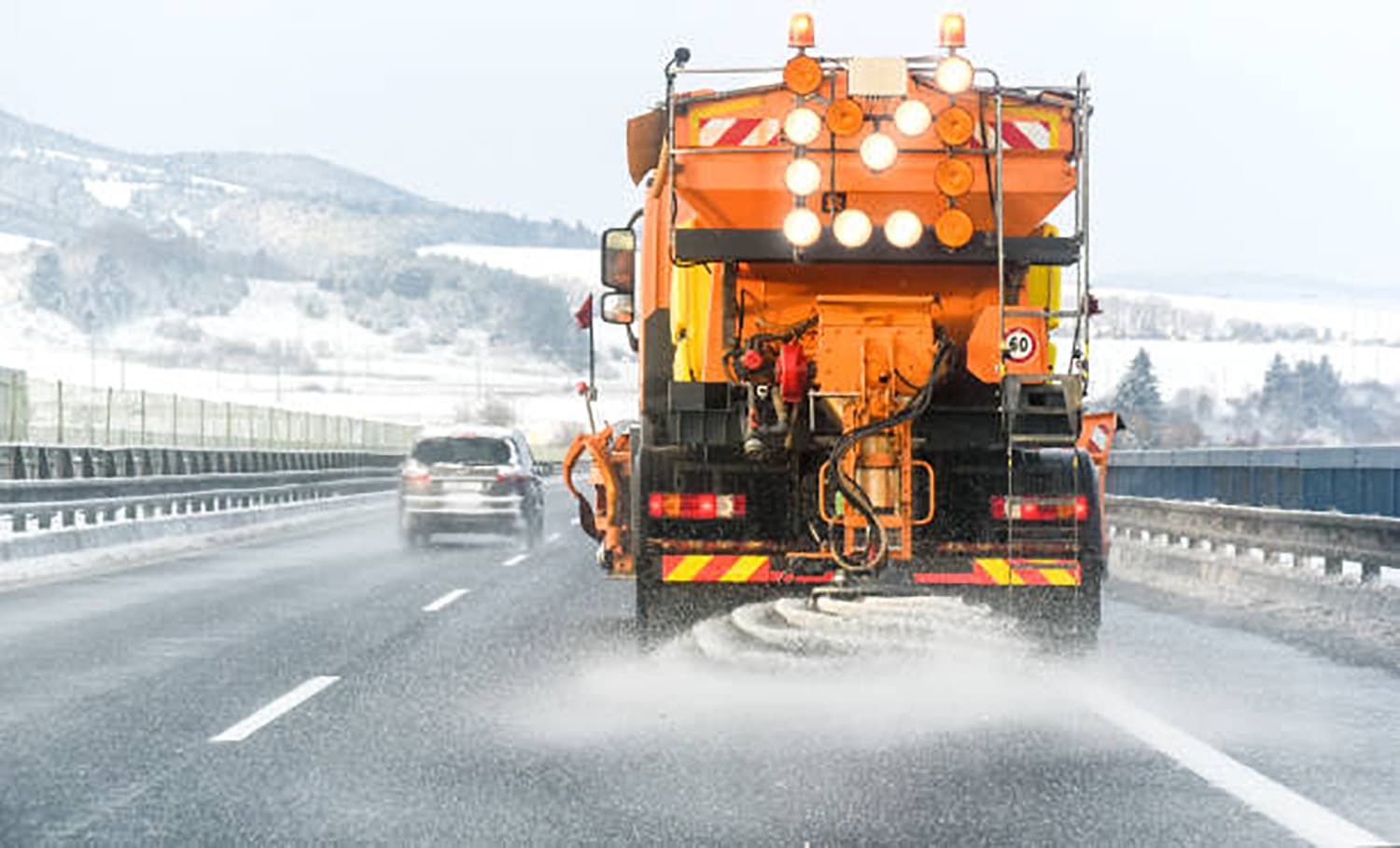How to Avoid Costly Salt Corrosion
Today, it hit forty-eight degrees Fahrenheit (nine degrees Celsius), and the sky was cloudless, blue, and sunny. It took everything in me not to hop on my motorcycle.
I know what you’re thinking: ‘Why didn’t you? I would have.’
The answer is simple—salt.
After months of winter storage, I’m itching to fire up my bike, hear its engine purr, and feel the road beneath my tires. I’m tempted—but I can’t.
Months of snow and sleet have left the roads in my city coated in a thick layer of salt. Since I can’t give my bike a thorough cleaning because I live in a high-rise without those facilities, I have to hold off. If you can thoroughly wash your bike after each ride in your garage, you can probably get out riding a little sooner than I can.
If you’re one of those people able to ask—What the heck is road salt?—consider yourself lucky. We, up here in snow country—New York, Vermont, Manitoba, Ontario, Minnesota, etc.—envy our brethren who can ride all year round.
But, if that is you, you still might not be off the hook. If you live or ride near the ocean, this applies to you too. Sea salt in the air is just as ruthless as road salt—if not worse—when it comes to attacking your motorcycle’s aluminum components.
The bottom line? Salt and aluminum are a bad combination. Here’s why you should wait for a good spring rain—I wait for at least two— to wash the salt off the roads. At the very least, clean your bike diligently after every ride if it’s been exposed to salt. If you don’t, you’ll pay for it later.
Why Salt Is Bad News for Your Motorcycle
Salt is great for preventing icy roads and making winter travel safer, but it’s a slow death sentence for motorcycles—especially their aluminum parts. Most modern motorcycle engines, wheels, and frames contain aluminum alloys, which are lightweight and corrosion-resistant compared to steel. However, when exposed to salt, aluminum’s natural resistance can break down, leading to oxidation and pitting.
Road salt, typically sodium chloride (NaCl) or calcium chloride (CaCl2), dissolves in water to create an electrolyte solution that accelerates corrosion. It doesn’t just sit on the surface of your bike—it seeps into crevices, electrical connections, and fasteners, quietly eating away at your machine.
The Chemistry of Corrosion: Aluminum vs. Steel
Steel rusts when iron reacts with oxygen and moisture, forming iron oxide. Aluminum, on the other hand, naturally creates a protective layer of aluminum oxide when exposed to air.
The problem? Salt disrupts this barrier, allowing moisture and oxygen to eat away at your bike.
Even worse, if your bike has mixed metals—such as aluminum in contact with steel bolts or a cast-iron cylinder liner—the saltwater solution can act as an electrolyte, setting up galvanic corrosion. That means one metal (often aluminum) sacrifices itself to protect the other, leading to pitting and structural weakening.
The Hidden Damage Salt Can Cause
The most obvious sign of salt damage is visible corrosion—white, powdery oxidation on aluminum parts and rust on steel components. But the real danger is what you don’t see:
Engine Components: Corrosion can affect cooling fins, crankcases, and cylinder heads, reducing their ability to dissipate heat efficiently.
Electrical Connections: Salt attracts moisture, creating an environment where electrical connections can corrode, leading to poor conductivity and intermittent faults.
Brakes and Suspension: Corrosion on callipers, brake lines, or fork tubes can compromise safety.
Wheels and Spokes: Aluminum wheels and rims, along with steel spokes, can suffer galvanic corrosion, leading to weakened structural integrity.
Sea Salt vs. Road Salt: The Corrosion Twins
If you ride near the ocean, your bike faces an equally relentless enemy: airborne sea salt. Unlike road salt, which is washed away after winter, sea salt is ever-present. The combination of salt, humidity, and constant exposure means corrosion can happen faster.
Sea salt builds up in hard-to-reach places. If you store your bike near the ocean, even a garage won’t fully protect it unless it’s well-ventilated and humidity-controlled. Riders in coastal areas need to be just as proactive in washing and protecting their bikes as those dealing with winter road salt.
How to Protect Your Bike from Salt Damage
Whether you’re dealing with lingering winter road salt or sea spray, prevention is key. Here’s how.
Wait for the Rain: If possible, delay that first ride until heavy rains have rinsed away the bulk of road salt. This gives your bike a better fighting chance.
Wash Your Bike After Every Ride: If you must ride, rinse your bike thoroughly with fresh water after each trip. Pay special attention to the underside, wheels, and brakes.
Use a Salt Neutralizer: Some motorcycle cleaning products contain neutralizers that break down salt and prevent it from continuing to corrode metal.
Apply Protective Coatings: Products like ACF-50 or corrosion inhibitors help create a protective barrier against moisture and salt.
Apply Grease to Electrical Connections: A thin coat of dielectric grease on connectors can prevent salt from causing electrical issues.
Wax and Seal Exposed Metal: A good coat of wax on painted surfaces and a protectant on bare metal can add an extra layer of defence.
Store Smart: If you’re near the ocean, keep your bike in a well-ventilated area with low humidity. Using a dehumidifier in the garage can help.
Don’t Let Salt Shorten Your Motorcycle’s Life
The thrill of an early-season ride is tempting, but the damage from road salt can stick around long after the snow is gone. And for riders near the ocean, salt is a constant battle. The good news? With some patience and proper maintenance, you can enjoy riding season without sacrificing your bike to corrosion.
Before you roll your bike out of hibernation, ask yourself: Is it worth the risk? If the roads are still laced with winter’s salt, wait another week.
Or, if you just can’t resist, at least give your bike a thorough rinse afterward. Your engine, your wallet, and your motorcycle will thank you.
Ride safe and be seen. I hope to see you out on the road sometime soon. Remember, becoming a skilled and confident rider is a marathon, not a sprint. Take it slow, enjoy the ride, and never stop learning. As I’ve discovered, motorcycling is more than just a hobby—it’s a lifestyle and a lifelong adventure.
– John Lewis

John is a passionate moto-traveller and motorcycle enthusiast who enjoys sharing stories that inform, inspire, and entertain. Specialising in motorcycle touring, safety, travel, or just about anything motorcycle-related, John’s insights, travels, and experiences have been featured in national magazines such as Motorcycle Mojo and The Motorcycle Times, as well as on various blogs and websites. When he is not riding or writing, he works as the service manager at a boutique motorcycle shop where he’s always ready to share a story or helpful tip.

